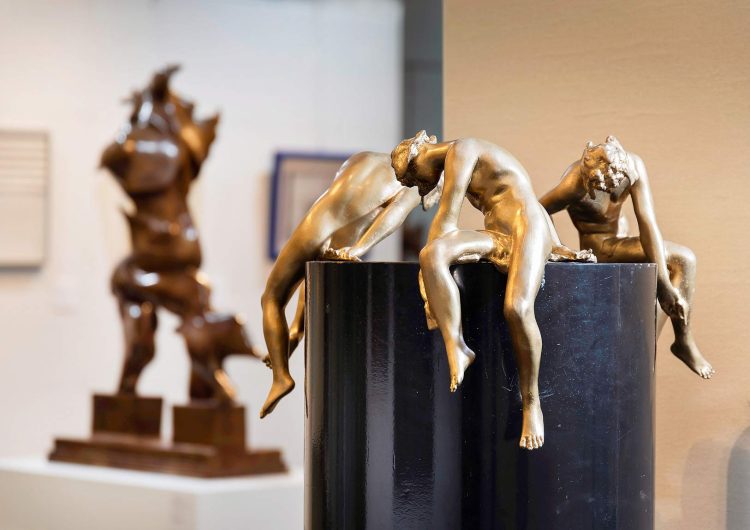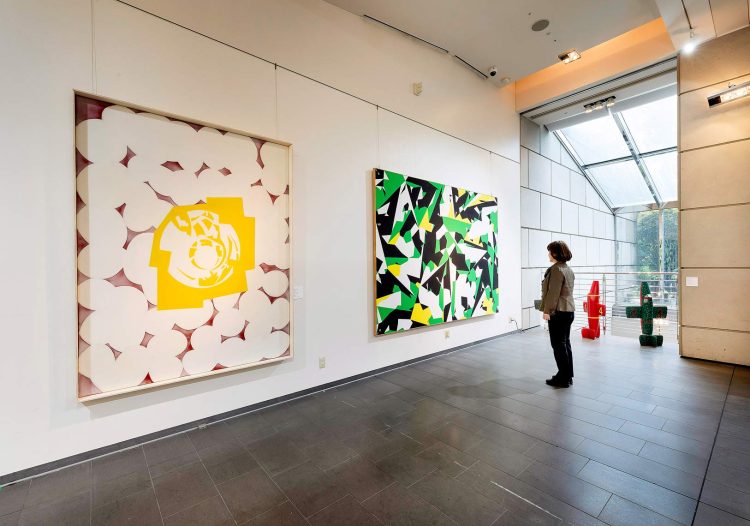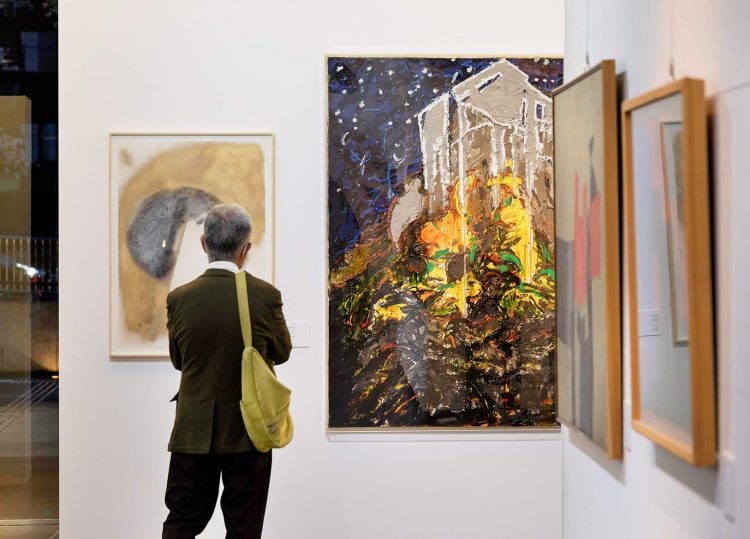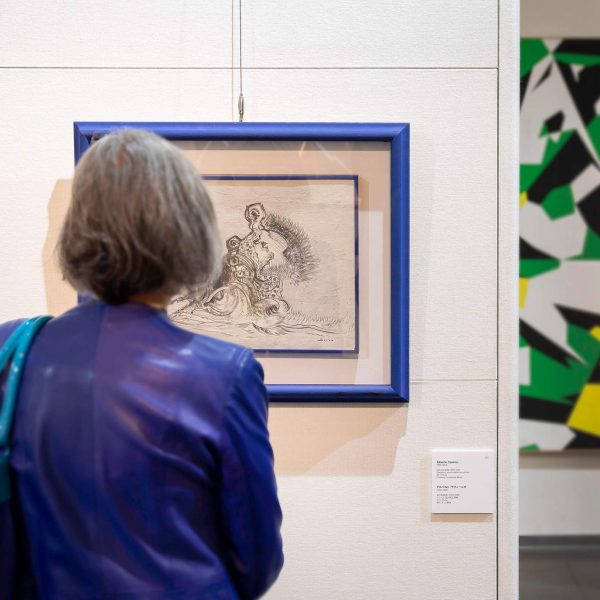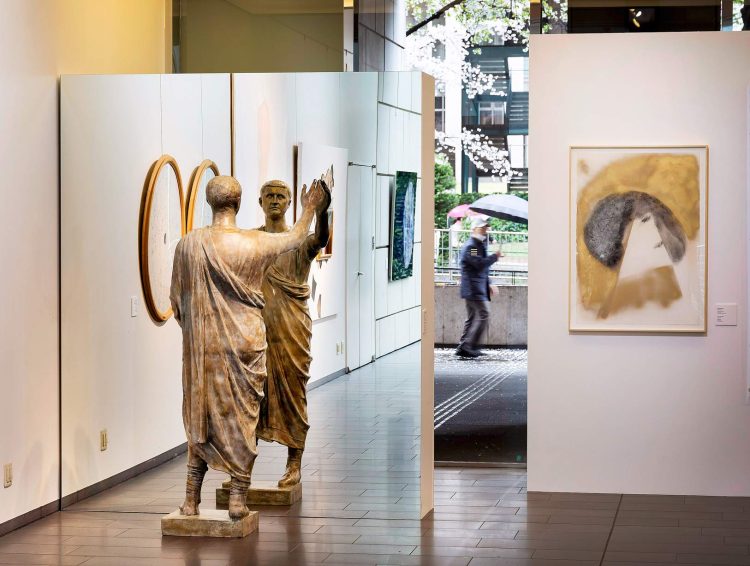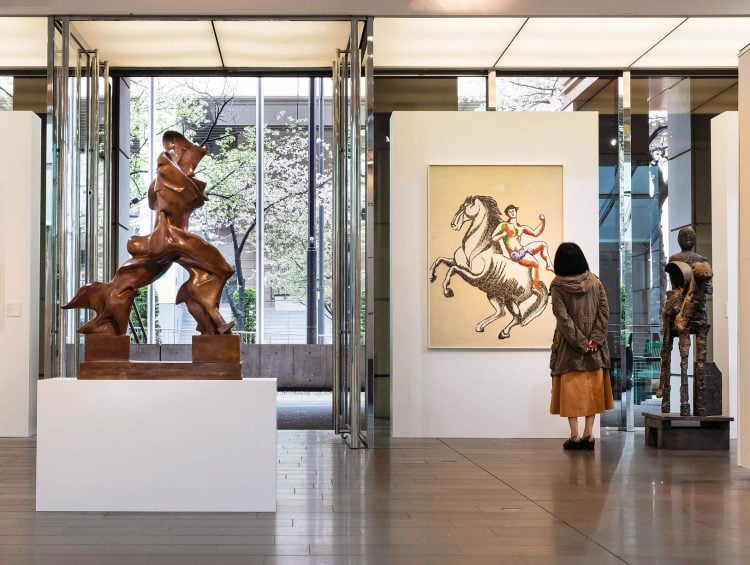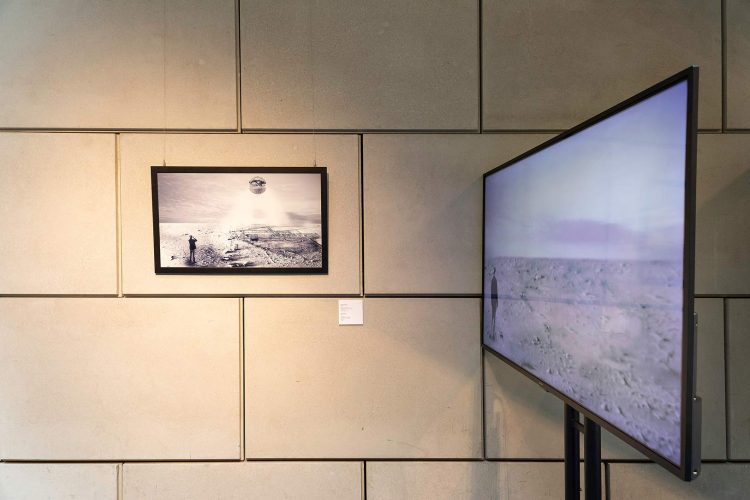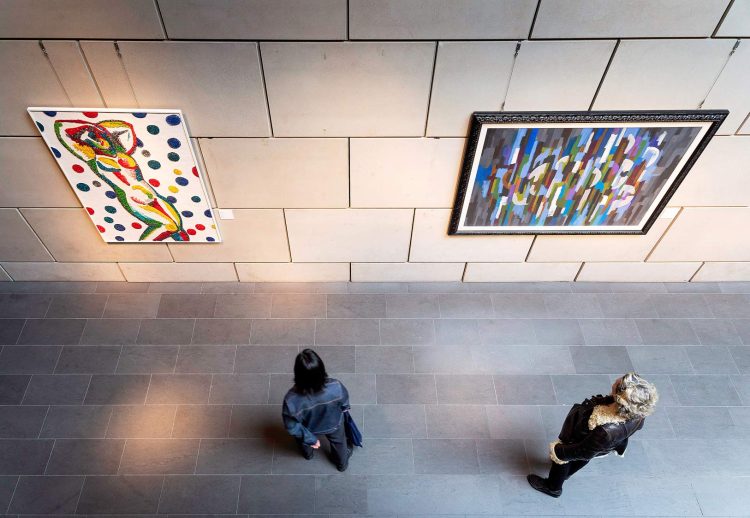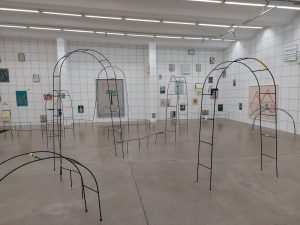The exhibition of the Farnesina Collection exemplifies a strategy oriented towards dialogue rather than celebration
”A man launched at breakneck speed into space or the future." This is the description that Professor Alberto Dambruoso makes of the famous work "Forme uniche della continuità nello spazio" by Umberto Boccioni, the artist among the leading exponents of the Italian Futurism movement. The artwork, already displayed last autumn in Osaka, is now exhibited in Tokyo as part of the "La Grande Visione Italiana. Farnesina Collection" exhibition. The display presents the last century of Italian art through seventy-two representative works of significant modern stylistic currents, from the first avant-gardes to the digital art of more recent times. After a first stop in Singapore, the exhibition was inaugurated last 24th March at the Italian Cultural Institute in Tokyo, designed by Gae Aulenti. After the Japanese stage, it will move first to New Delhi and then to Seoul.
Organized by the General Directorate for Public and Cultural Diplomacy of the Ministry of Foreign Affairs and International Cooperation, the traveling exhibition was curated by Professor Achille Bonito Oliva with the curatorial development of Paola Marino. The coordination of the show is entrusted to Simona Rossi, and the exhibition project is by the architect Anna Fresa.
"Contemporary art is a unique tool to communicate Italy in a new and exciting way." The Italian Ambassador in Tokyo, Gianluigi Benedetti, presented the exhibition at an event organized at the magnificent Horiuji Hall, designed by Japanese architect Yoshio Taniguchi, at the Tokyo National Museum. In his speech, the Ambassador recalled that this exposition facilitates exchanges between two "cultural superpowers." The exhibition makes contemporary art known to Japan, which already appreciates ancient art. It narrates Italy beyond the commonplace of a nation clinging to its noble past, showcasing a country in constant tension towards the future.
The artworks, set up in the exhibition hall and the large staircase leading to the auditorium, follow a thematic and non-chronological itinerary, highlighting at the same time the contrast / dialogue between the contemporary presence of figurative and abstract artists. They share the sense of avant-garde that distinguishes the "made in Italy" from design to research, industry to technology. Overall, the exhibited works represent a country that has broken with tradition but, at the same time, retains references to its identity, similar to what happened in Japan, starting from the Expo in Osaka.
In the words of the curator Achille Bonito Oliva, Italian art has continuously operated under the sign of renewal and memory. The selected works document the constant tension experienced by the artists, in a balance between continuity and break with the past. Italian art represents people who have consistently achieved harmony between work and leisure, best embodying the futurist concept of "aestheticization of everyday life." The exhibition of the Farnesina Collection exemplifies a strategy oriented towards dialogue rather than celebration. The exhibited works stimulate criticism and thought, thanks to their experimental soul. Together, they symbolize the "grand vision" that has always characterized Italian art.
Professor Silvana De Maio - director of the Italian Cultural Institute in Tokyo - highlighted the Institute's role in promoting contemporary art as early as the 1960s. Professor Shioda Jun'ichi wrote about the strong presence of ancient traces in the modern art of Kounellis, Merz, and others. The Japanese could visit the same ancient art in exhibitions at home or during their travels abroad. De Maio underlines the importance of resuming the organization of live events at the IIC after the long pause of the pandemic. The meeting between people through the exhibition of artworks generates emotions challenging to match the virtual events we have been accustomed to in recent years.
The catalog, published by Silvana Editoriale, contains contributions from the curators and institutional figures. In his contribution to the catalog, the contemporary art critic Valentino Catricalà talks about amazement and "soft power." The first is the feeling generated by knowing that such a collection has been created and hosted by the Ministry of Foreign Affairs. The second concept - coined by political scientist Joseph S. Nye Jr. - concerns the ability of political power to persuade through culture. In line with the diplomatic approach, the collection changes according to the changing times. It adapts to new languages and dialogues in ever-changing ways thanks to the numerous forms of expression of art. For example, through technology, present in the most recent works.
The catalog also contains an unedited interview with Ambassador Umberto Vattani, creator of the "Farnesina Collection" in 2000. In the interview, Vattani talks about how the collection is an essential tool for cultural diplomacy and speaks of this traveling exhibition as a real "cultural revolution."
Quoting the saying, "Art cannot bear indifference," Vattani describes the extreme reactions aroused by the idea of transforming the Ministry of Foreign Affairs building into a permanent exhibition of contemporary art. The newborn Farnesina collection had the merit of promoting the debate on contemporary art in a period in which the great museums dedicated to it had not yet arisen. More than twenty years after its creation, it actively performs a double function: centripetal, in attracting and exhibiting the masterpieces of contemporary art; centrifuge, in positioning these masterpieces even outside the Italian borders, in strategic places such as New York, London, Brussels, Moscow, and others. The artworks in the Rome exhibition welcome foreign diplomats who visit the Ministry. They are like a business card, an interface through which Italy interacts with the world.
The "loan for use" formula, adopted for the procurement of the works, offers a double advantage: savings for the state coffers and the dynamism generated by the rotation of the pieces. During visits by foreign ministers from other countries, the works from the collection have been used to highlight specific topics covered by diplomatic meetings. For example, Michelangelo Pistoletto's Etrusco is cited to underline the risks caused by climate change.
The presence of the works of art stimulates dialogue and interaction between visitors. This traveling exhibition has the same objective: to create a bridge with the East through encounter and dialogue.

 English
English 日本語
日本語






